Summer has turned into winter and now that the boat is finally sea worthy, it is too cold to go out. In all honesty, sea worthy just means it would float. The transom has been completely replaced along with all the flooring for the back 1/3 of the boat.
In my last post, I talked about the deteriorated transom. For those not brought up on the water, the transom is the back of the boat where the outboard motor mounts. After realizing it was cracked, I finally decided to look further at the damage and decide on a repair.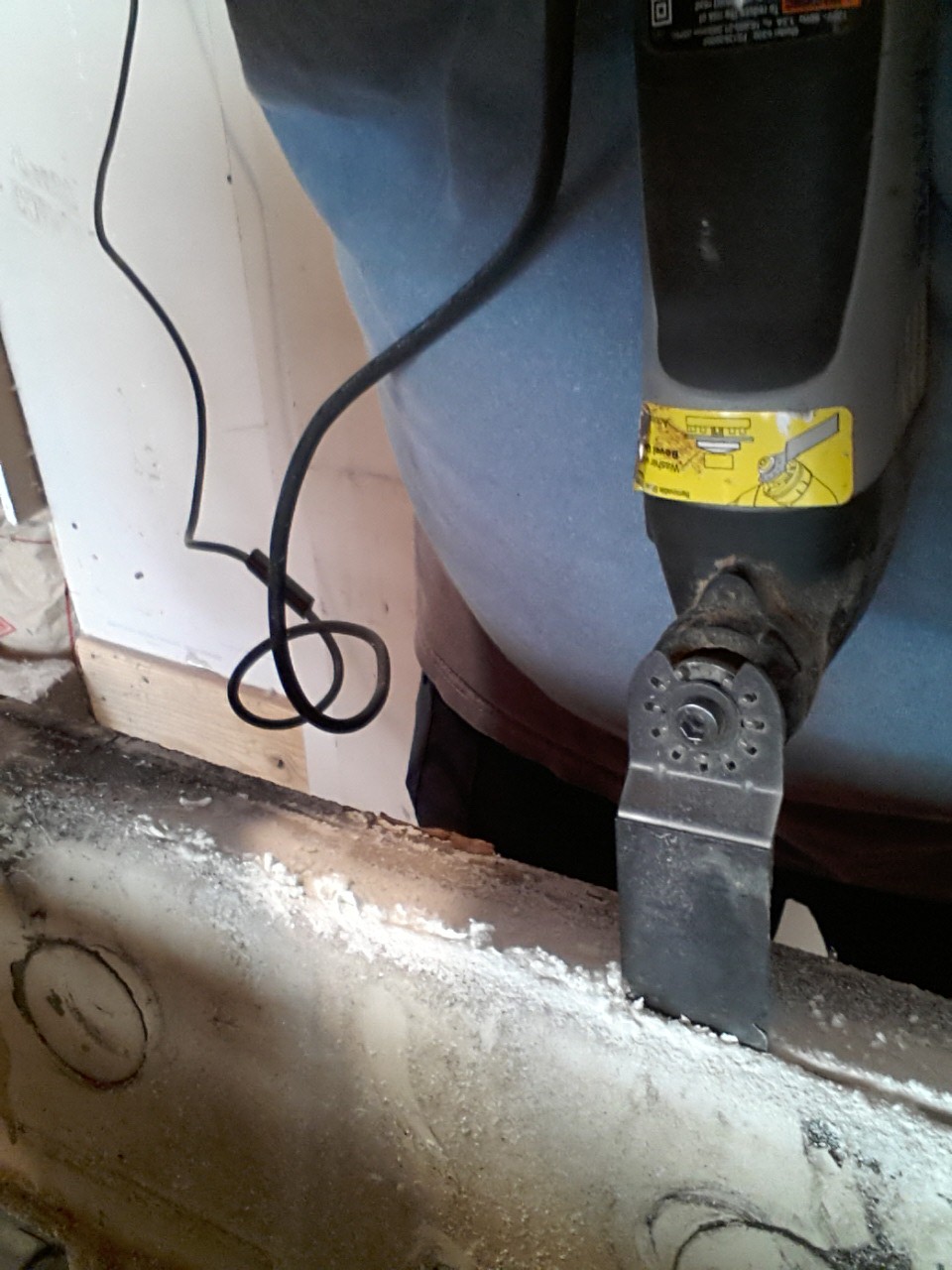
I cut the fiberglass along the top edge of the transom so I could lift off the top and see down into the inside.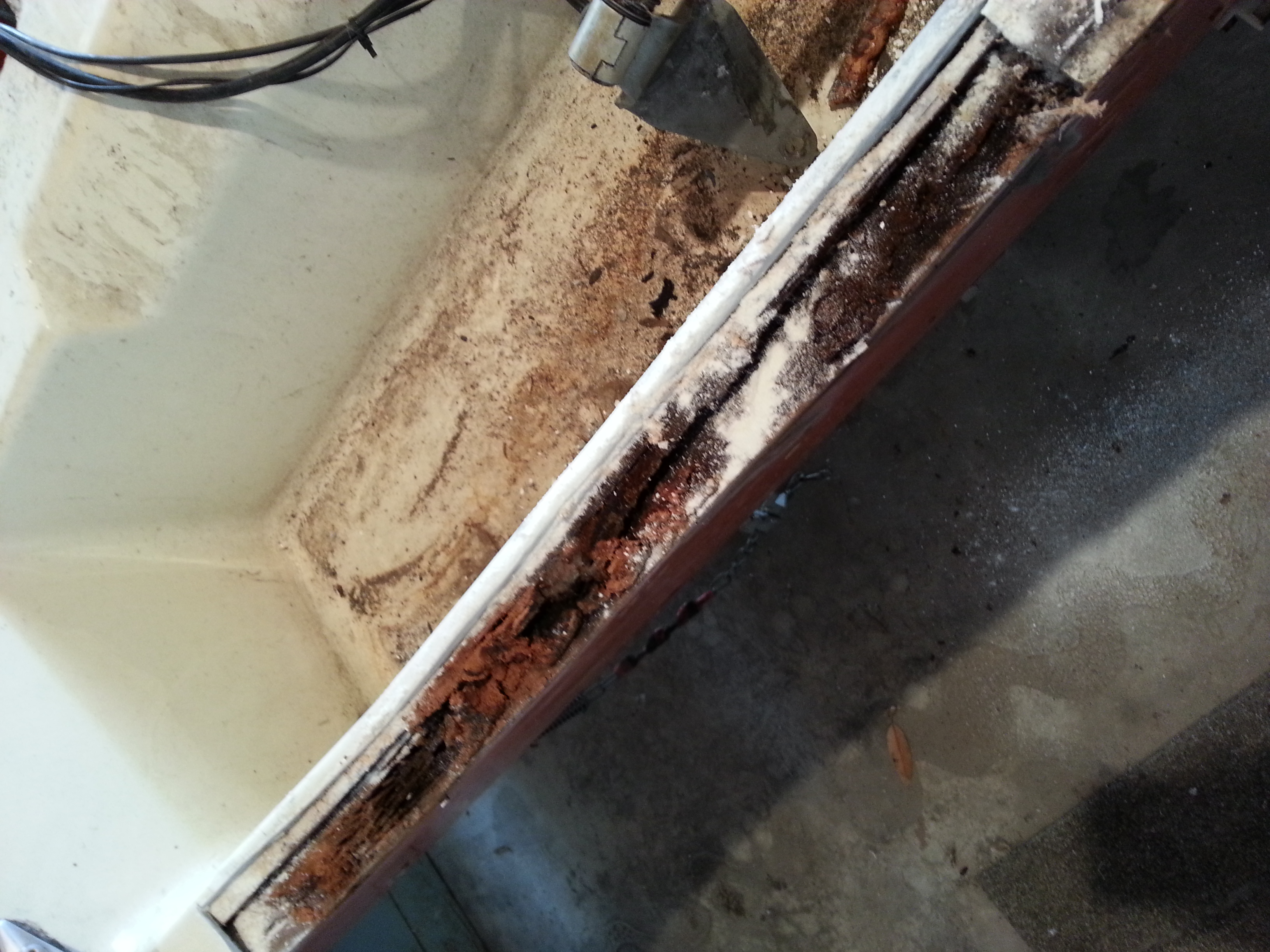
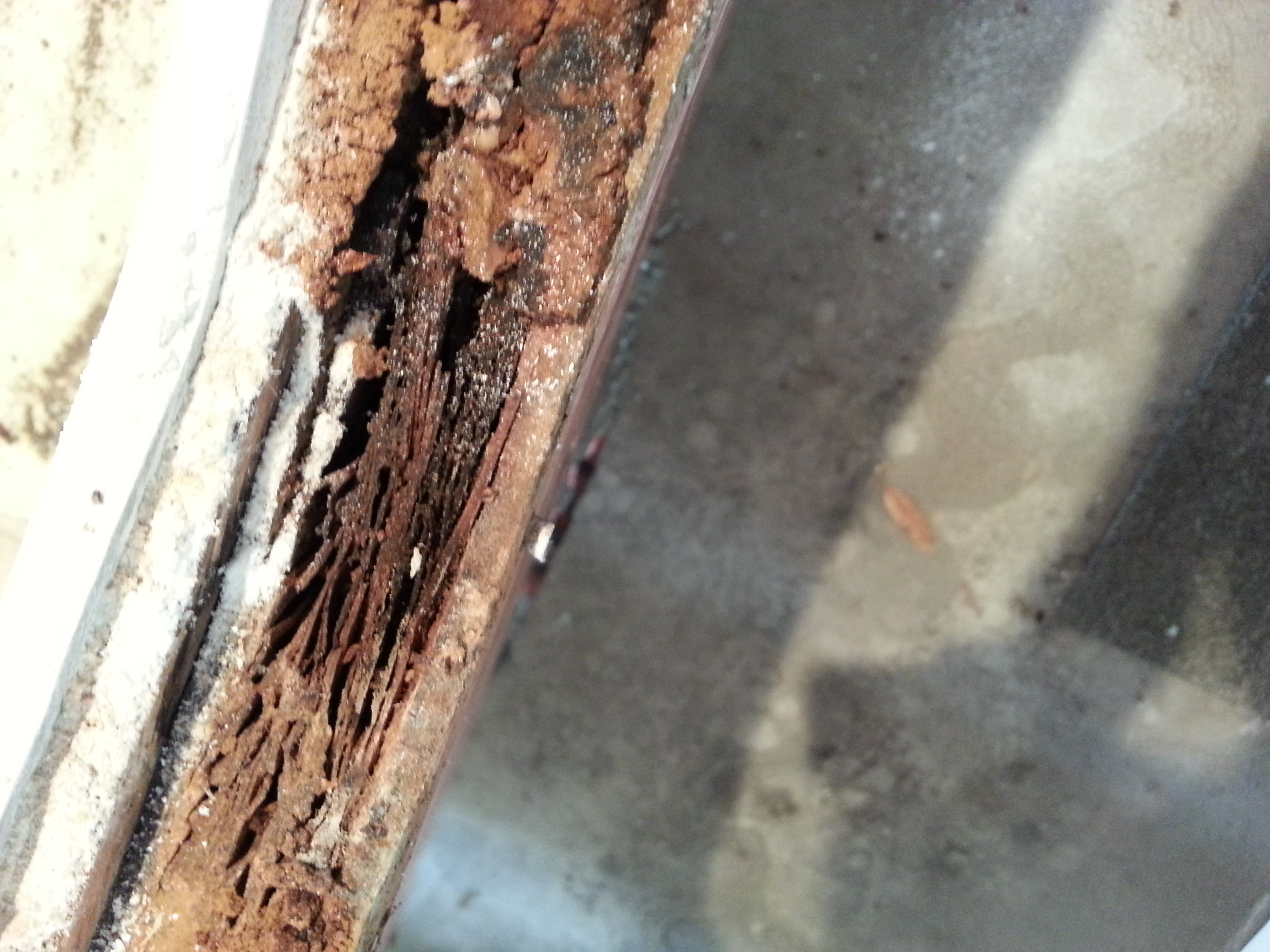
With the cap removed, it was obvious the wood was rotted and had to be removed. The plan was to dig out the old wood with long tools and fill the cavity with a pour-in polyester slow setting material.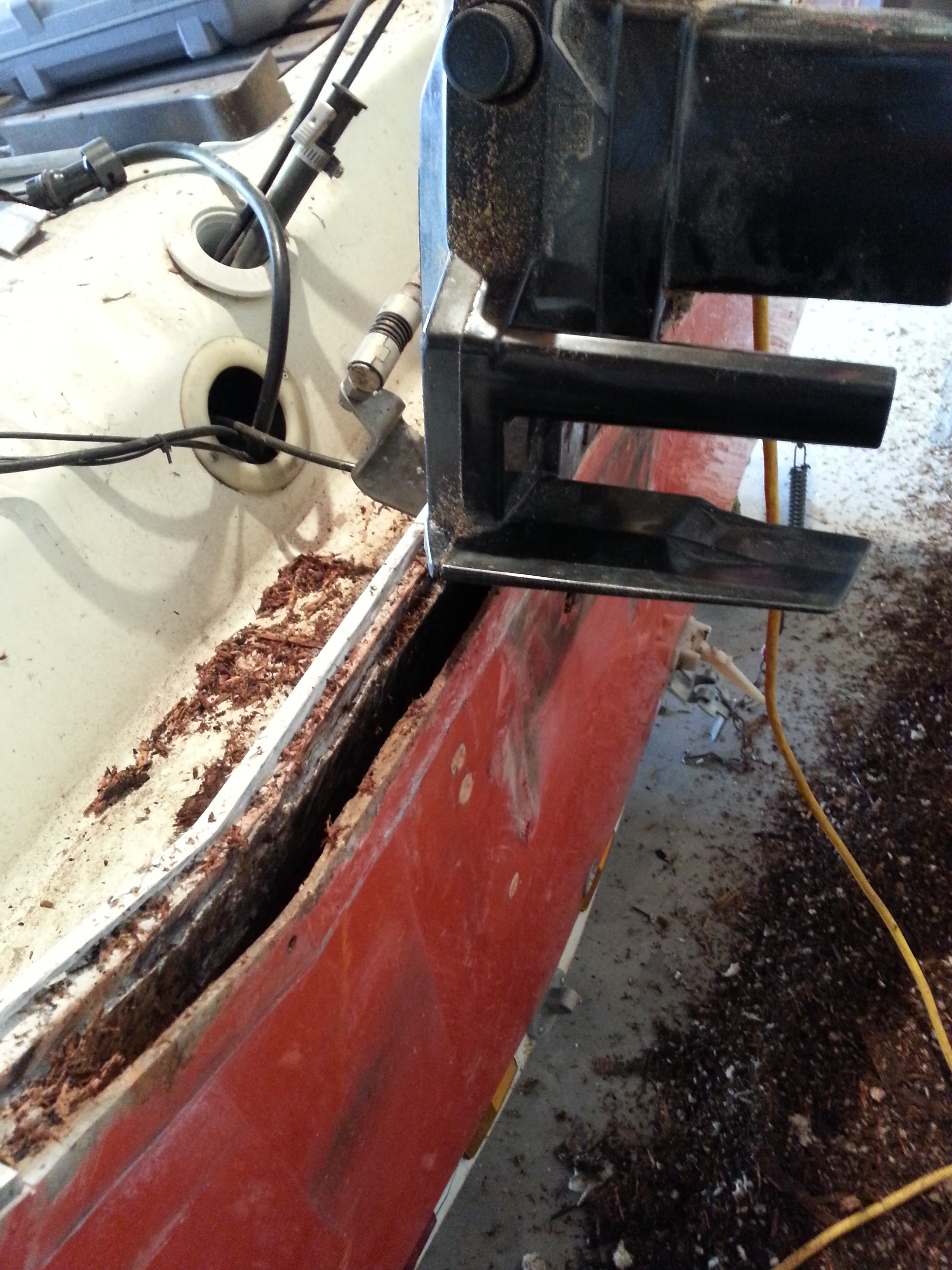
Using a chain saw, it became evident that the damage was too extensive for this process. The original option required the inside and outside fiberglass skin had to be in tact. The inside layer of fiberglass was damaged and could not be easily rebuilt from the inside so I had to resort to plan “B” which required completely removing the outside skin and rebuild the wall with fiberglass and plywood in layers. 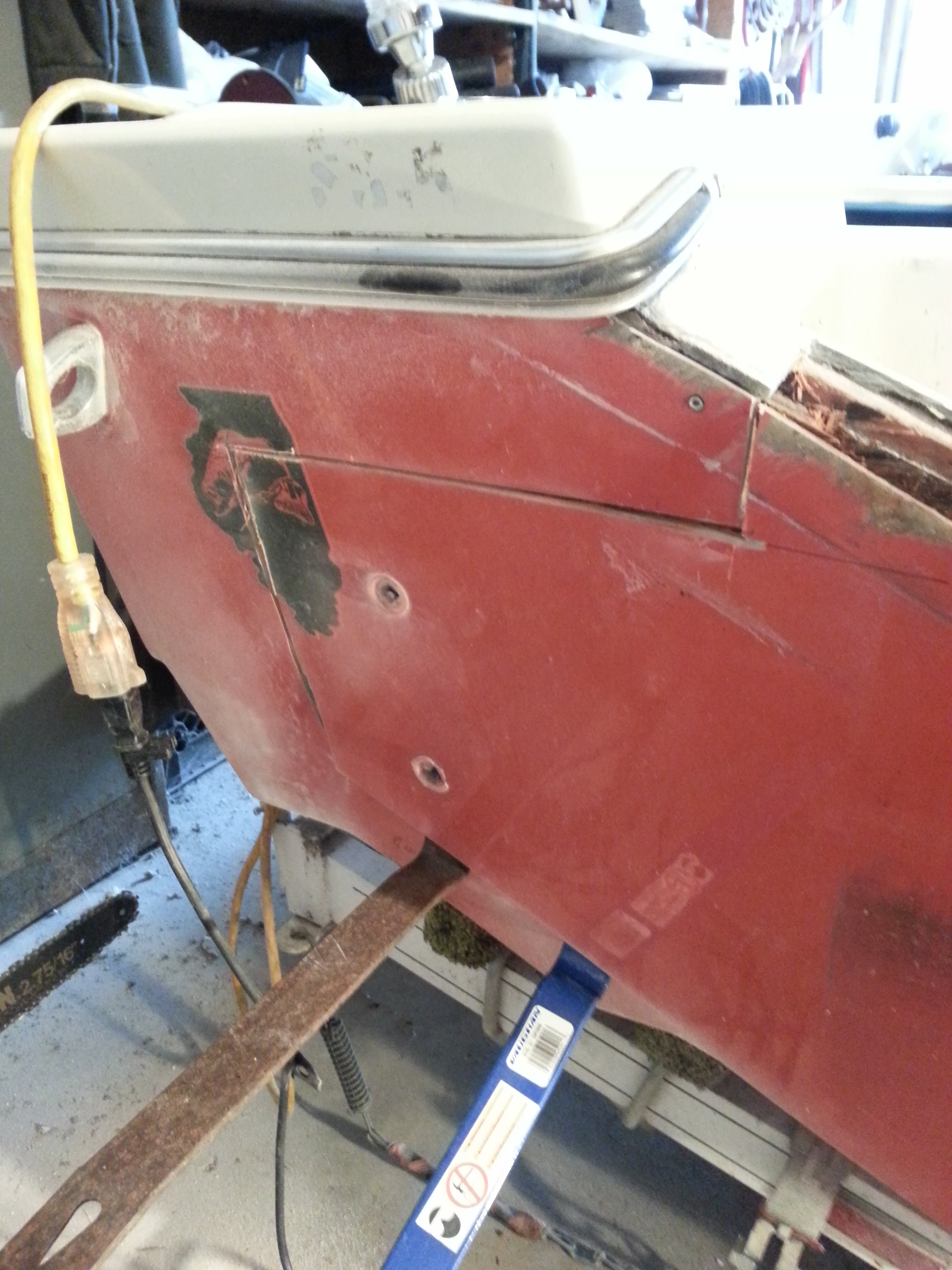
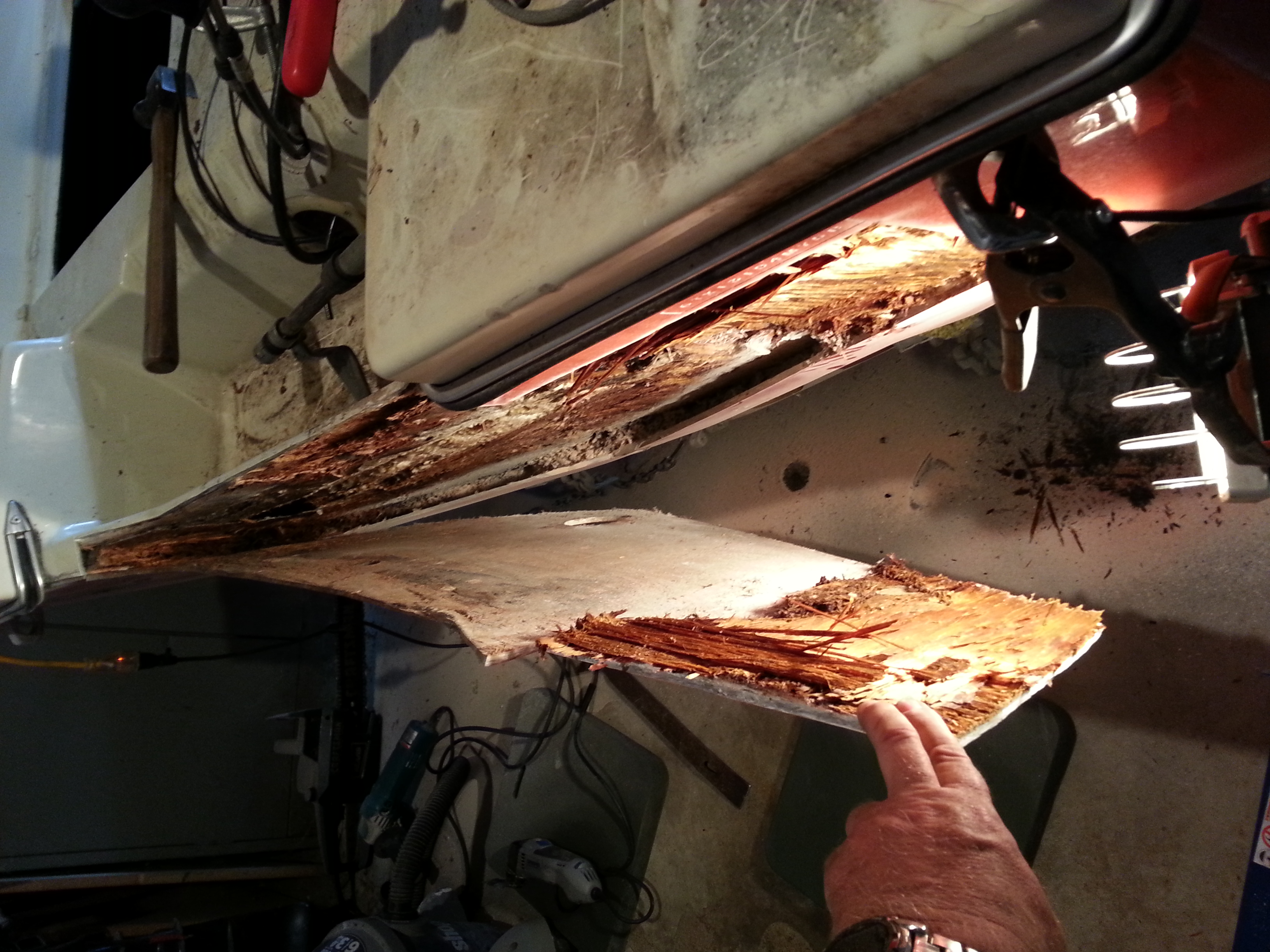
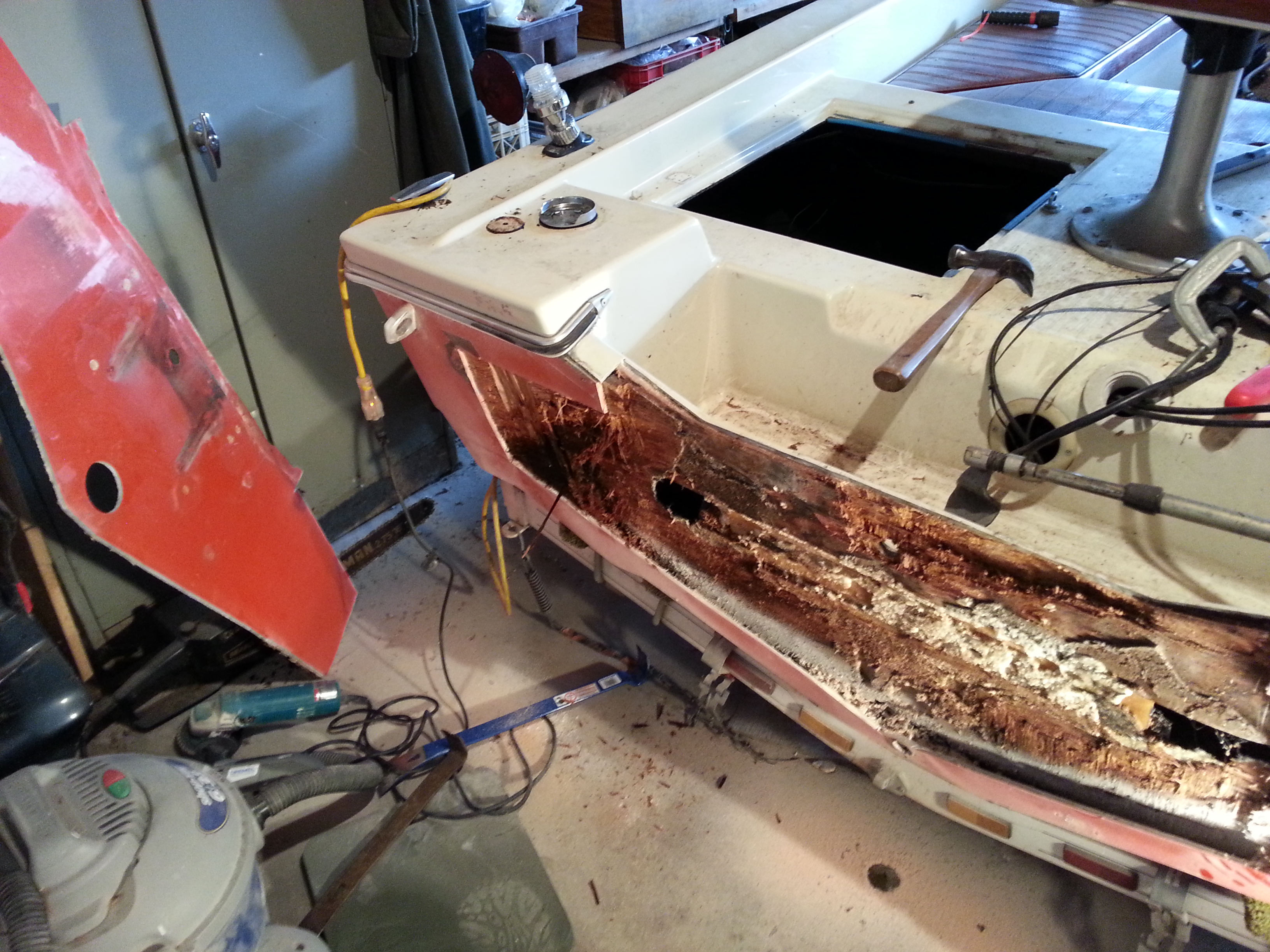
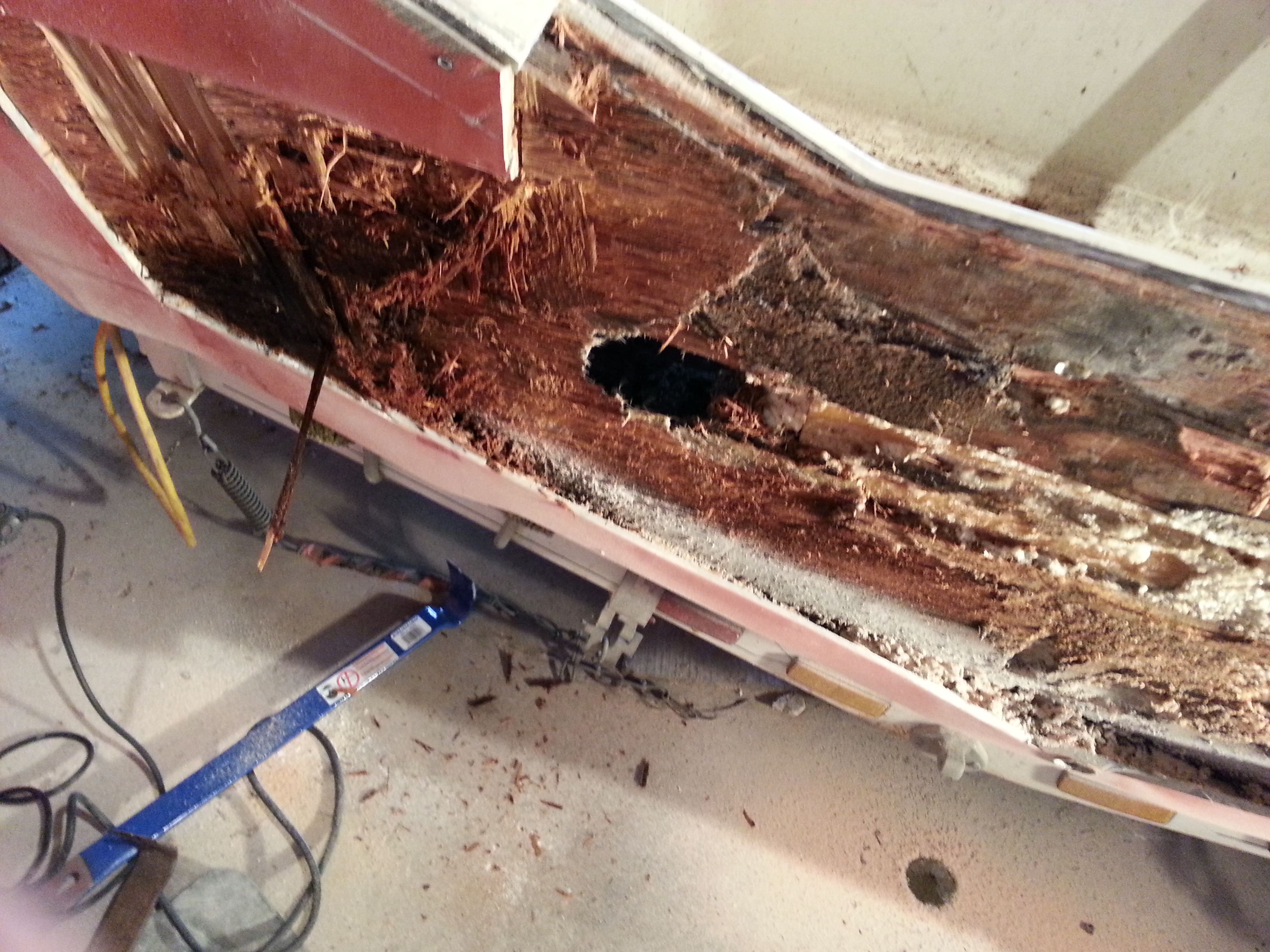
The removal shown above showed how extensive the damage was. There was wood rot over the entire transom and also previous repairs I had made were completely ineffective. I knew I had to completely remove both inside and outside fiberglass layers and rebuild them.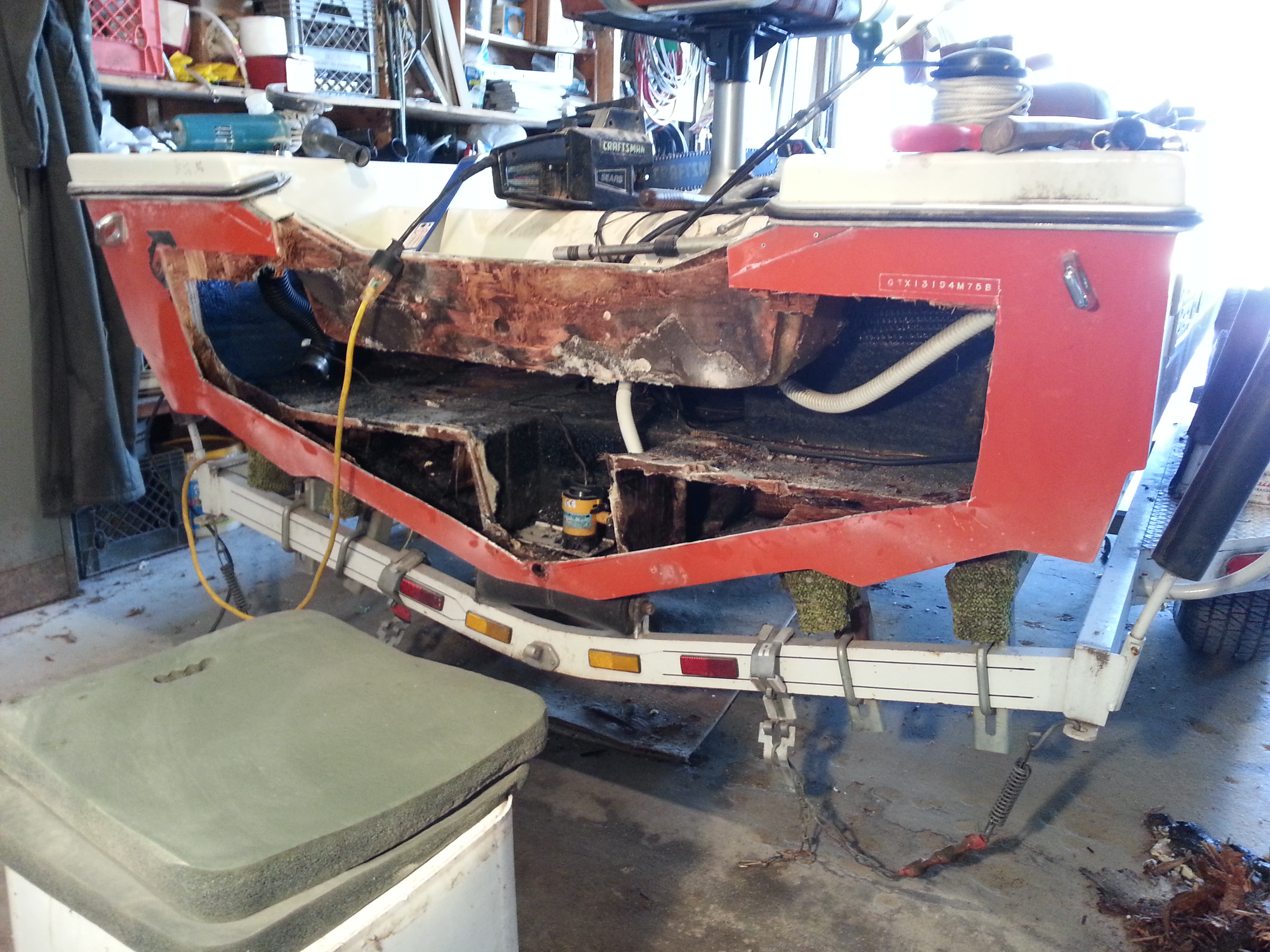
With it open, I saw even more damage. The flooring where the battery and gas tank sit was also deteriorated. The top of the floor was covered with fiberglass but the plywood support was not protected from the bottom. Moisture that had leaked into the lower section apparently condensed on the underside of the floor and it looked like charred wood and crumbled when probed. 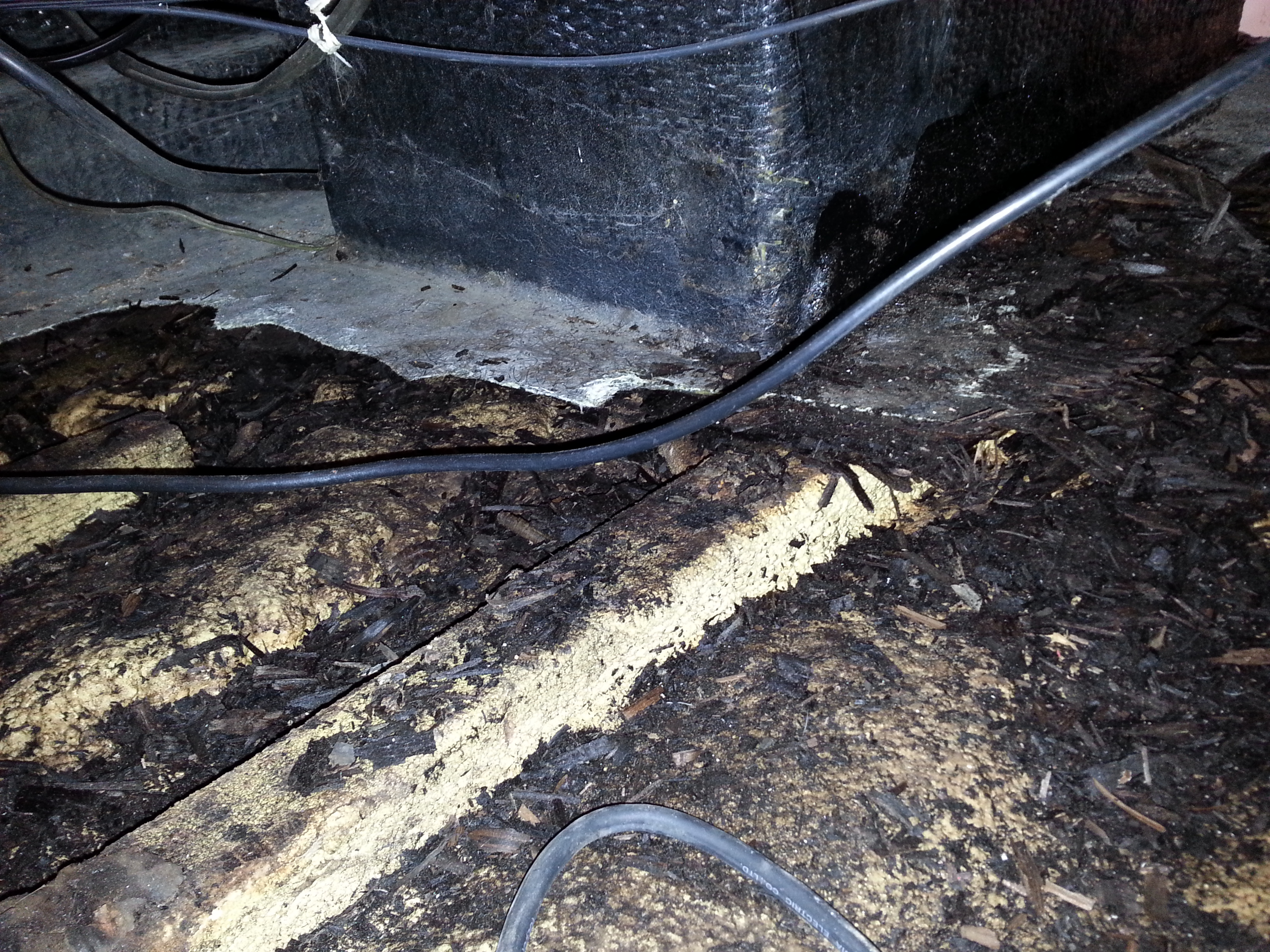
The photo above shows the top layer of fiberglass removed and some debris still remaining. That charcoal looking material was the old wood flooring. 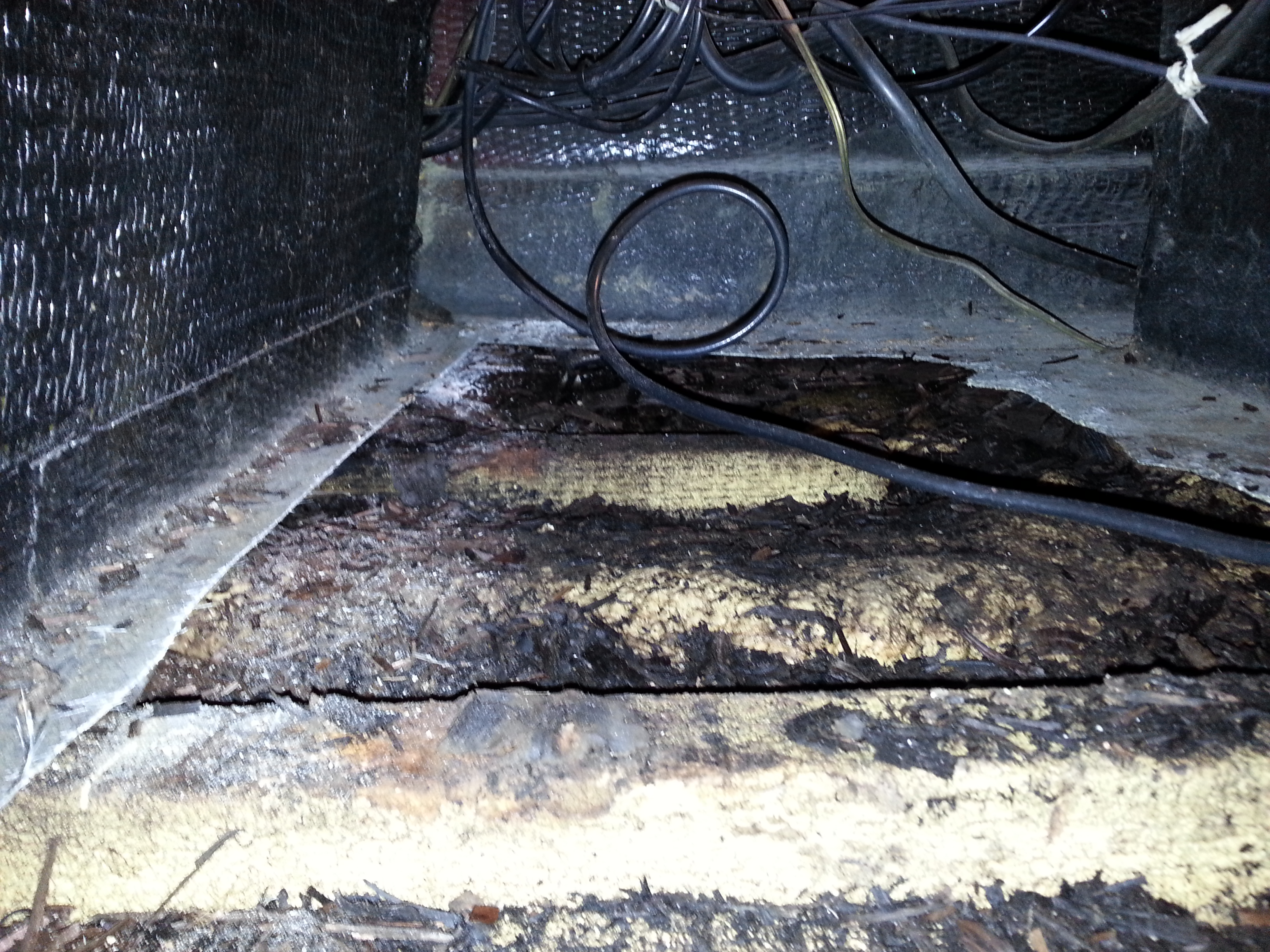
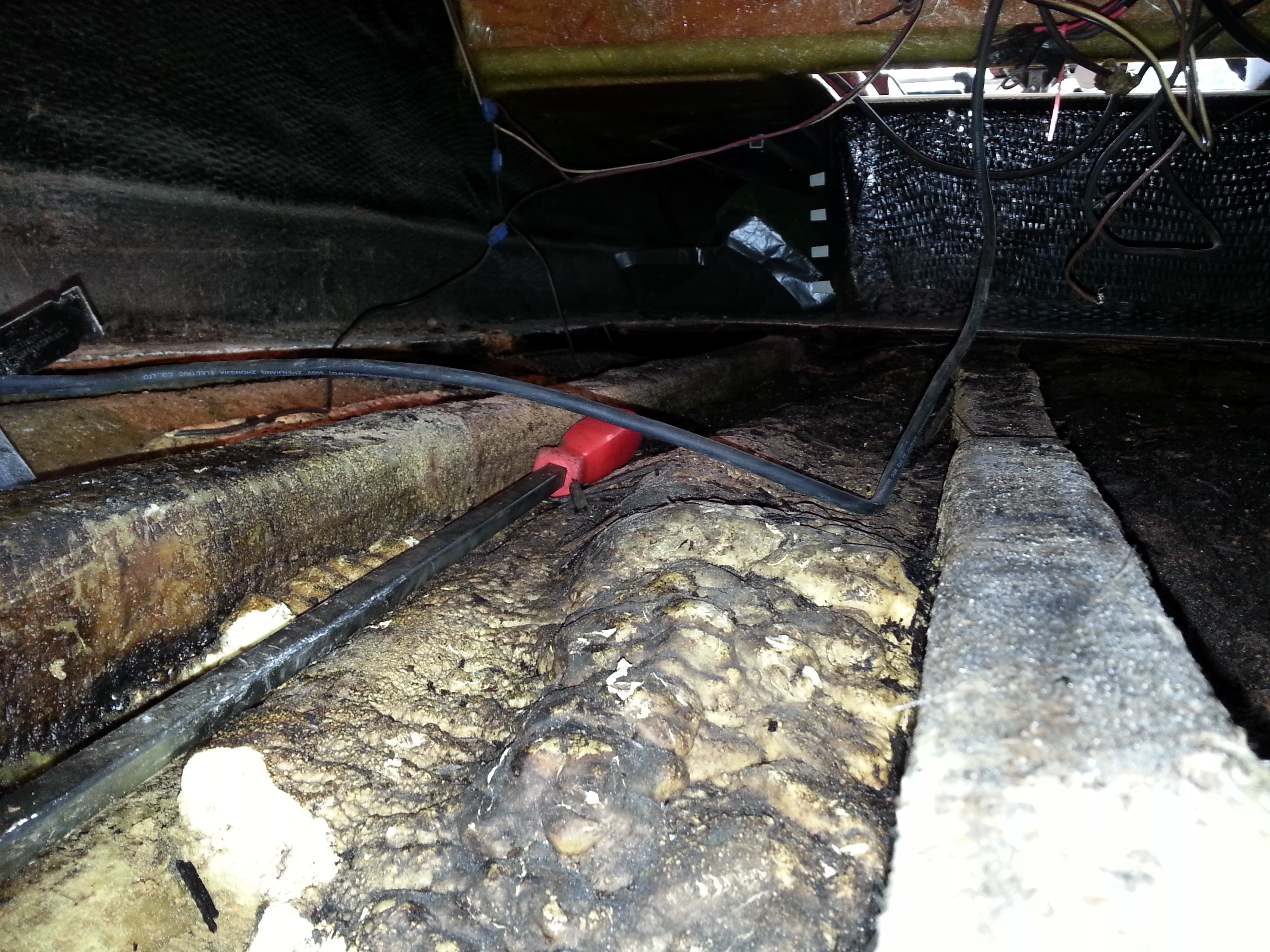
The stringers that support the floor above the hull (bottom of the boat) were not wood wrapped in fiberglass but rather just fiberglass. This made replacement of the stringers both unnecessary and impossible even if I wanted to do it without completely disassembling the boat which I would not do. You can also see the old foam that partially filled the space between the stringers. I had expected the foam to be saturated but it was not so I did not try to remove and replace it. After removing the fiberglass layer and cleaning out the space. I replaced the old plywood with treated plywood. It was wedged between the existing fiberglass stringers and the fiberglass lip I had left when cutting out the fiberglass top. A marine quality adhesive was used to secure the wood to the fiberglass stringers. 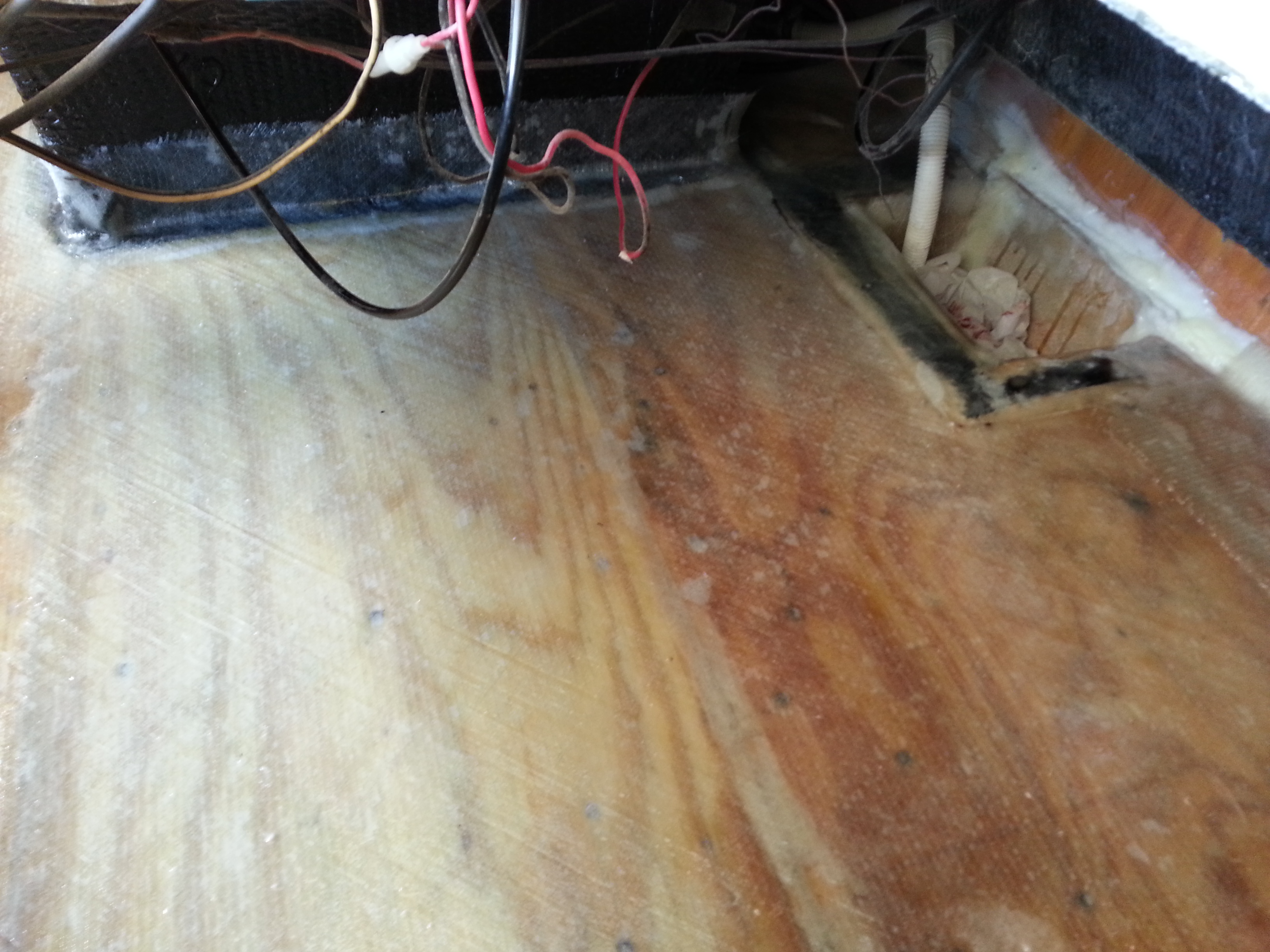
Once the wood was secured and securely anchored, I added multiple layers of epoxy over fiberglass cloth. With this new solid floor, the transom would have substantial support for the forward thrust of the motor. Now that the floor was replaced, it was time to go back to the transom and rebuild it. 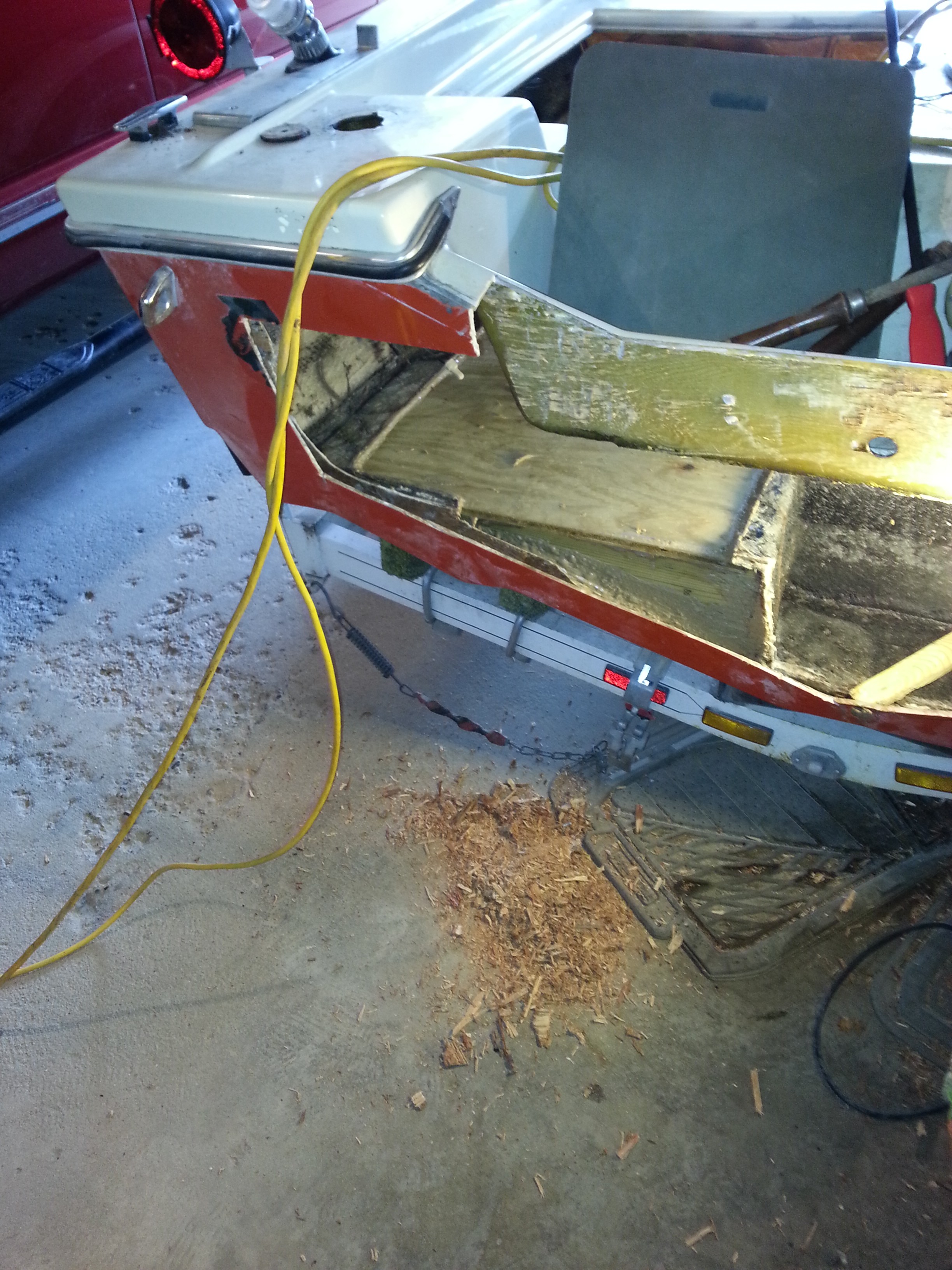
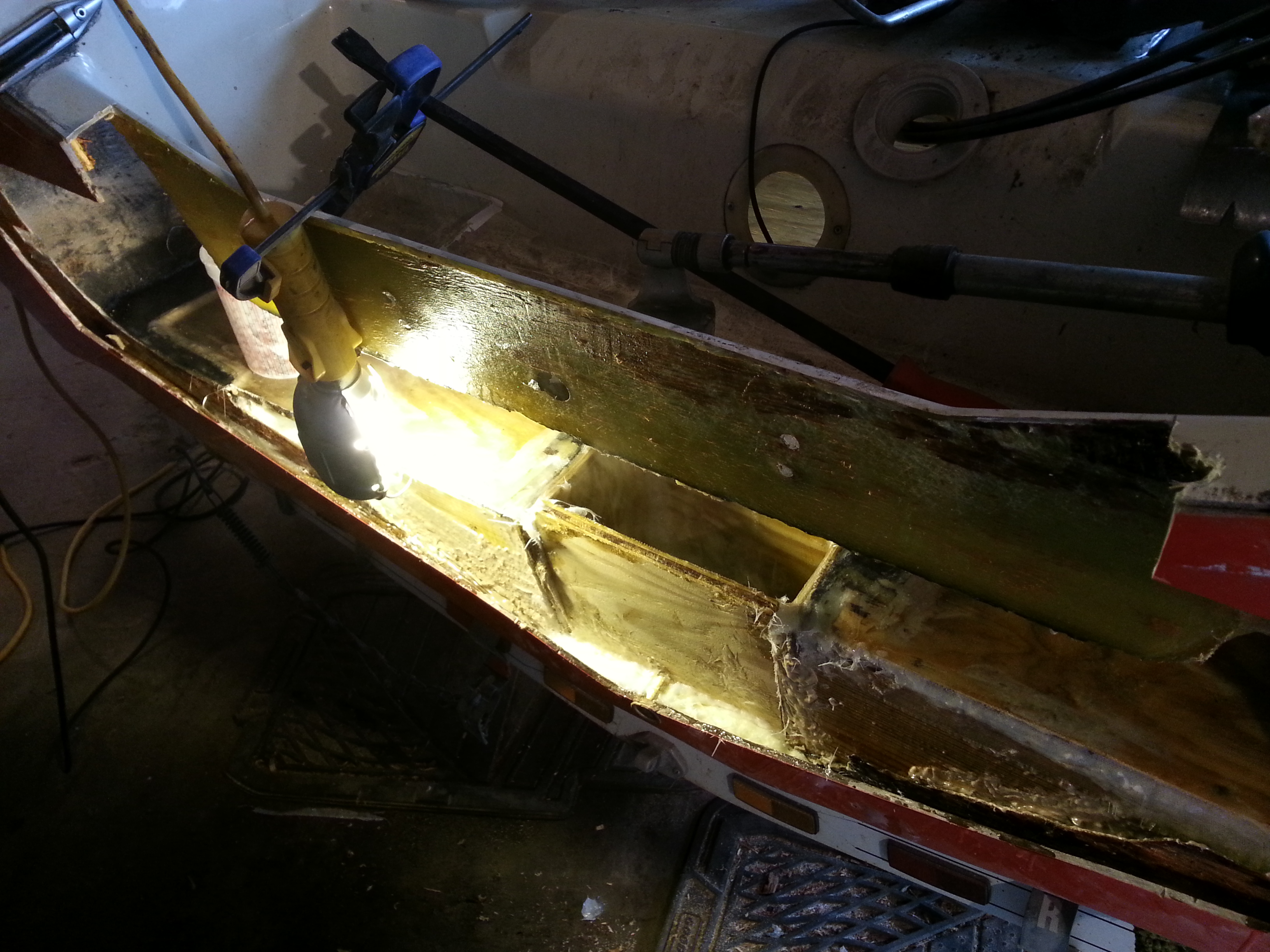
I started at the base to both support the back of the flooring and to fill the lower section of the transom. Because of the configuration I could not just add a built up transom because it had to be slid into place behind the smaller opening. I wanted to leave the original edges for the support so I built the transom wall in pieces with staggered seams. 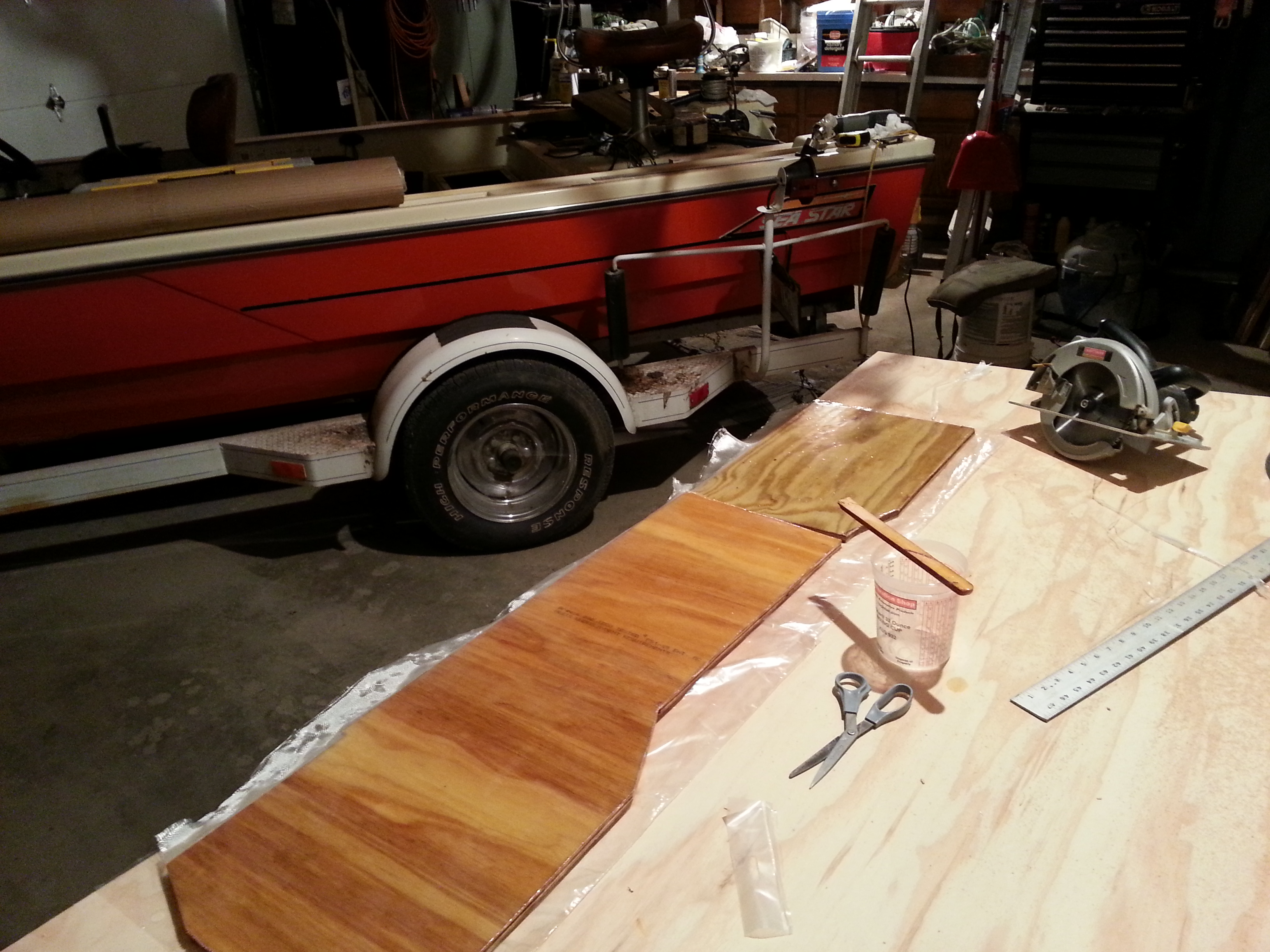
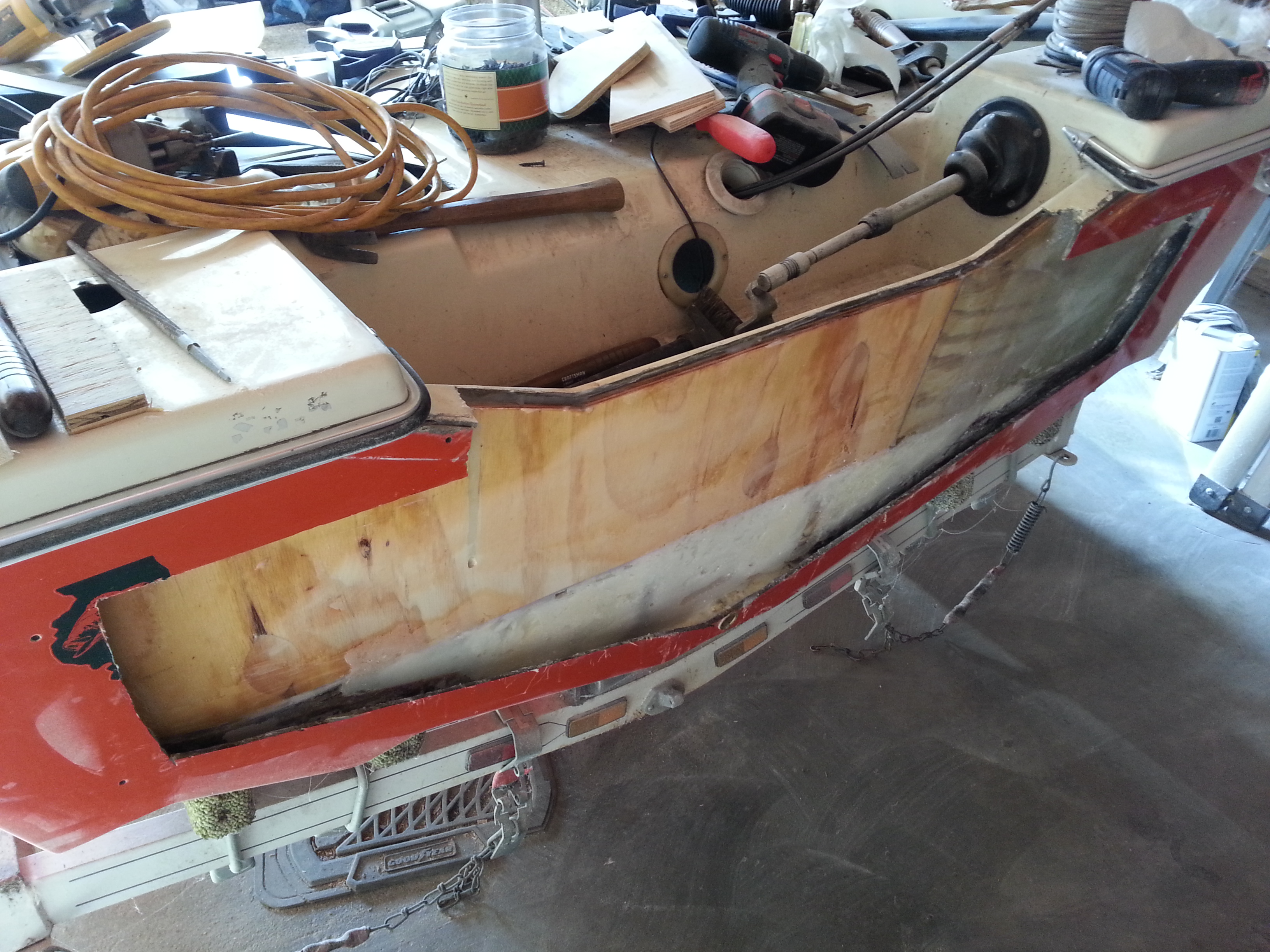
I laid out the wood on the table and fiber-glassed the back side. It was in two pieces. Once in place, I used an epoxy filler made from cut fiberglass strands and epoxy resin to fill and level the lower section with the newly installed upper sections. Once set the filler was sanded smooth with the upper section. The seam on the back was covered with fiberglass cloth and epoxy and then a full sized layer of bi-axial cloth and epoxy covered the entire width. I also put a layer of fiberglass cloth and epoxy on the backside of the second layer of wood. 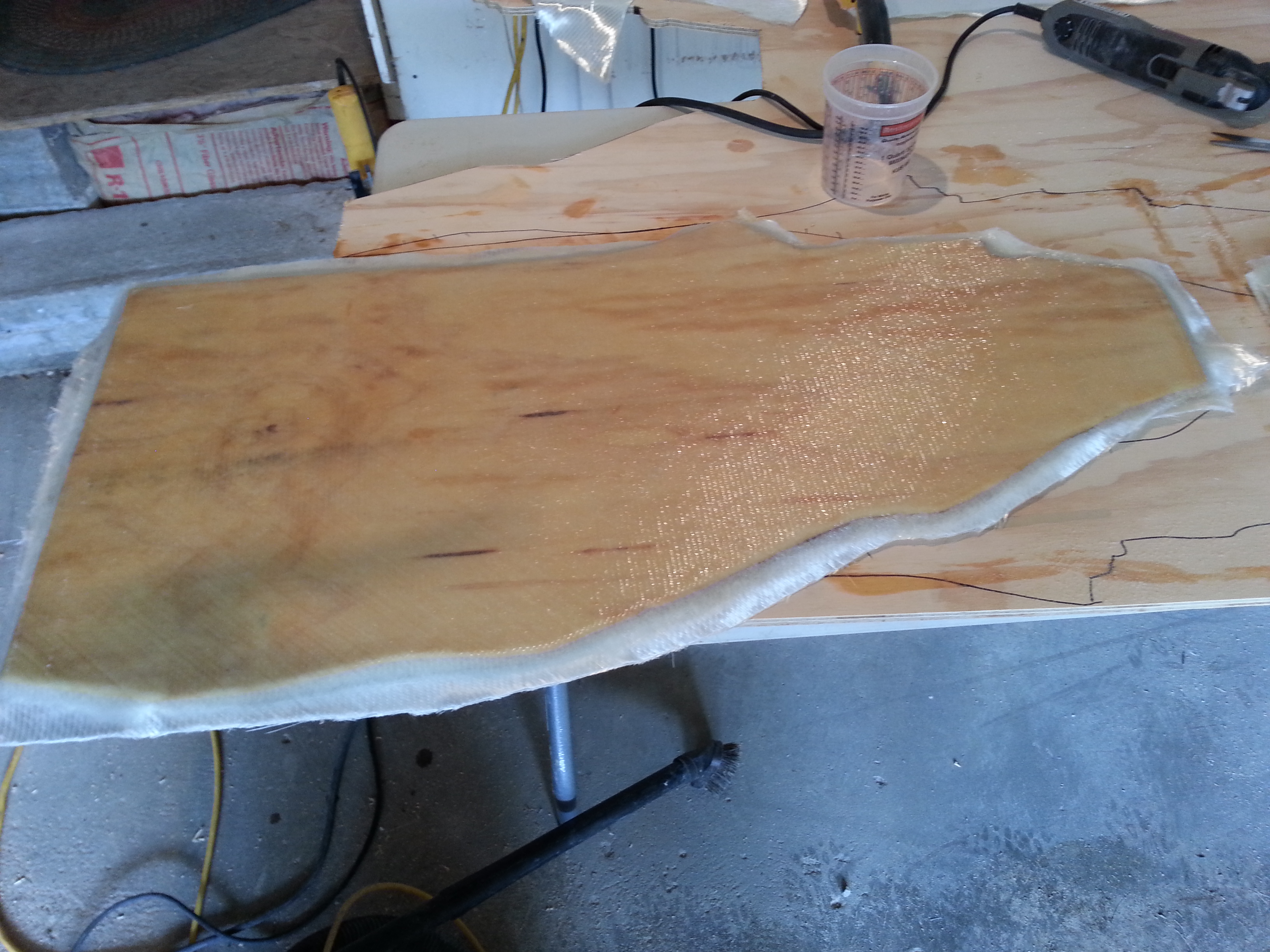
It was seamed on the left side where the first layer was seamed on the right. It was held together by epoxy glue covering previously applied layer. 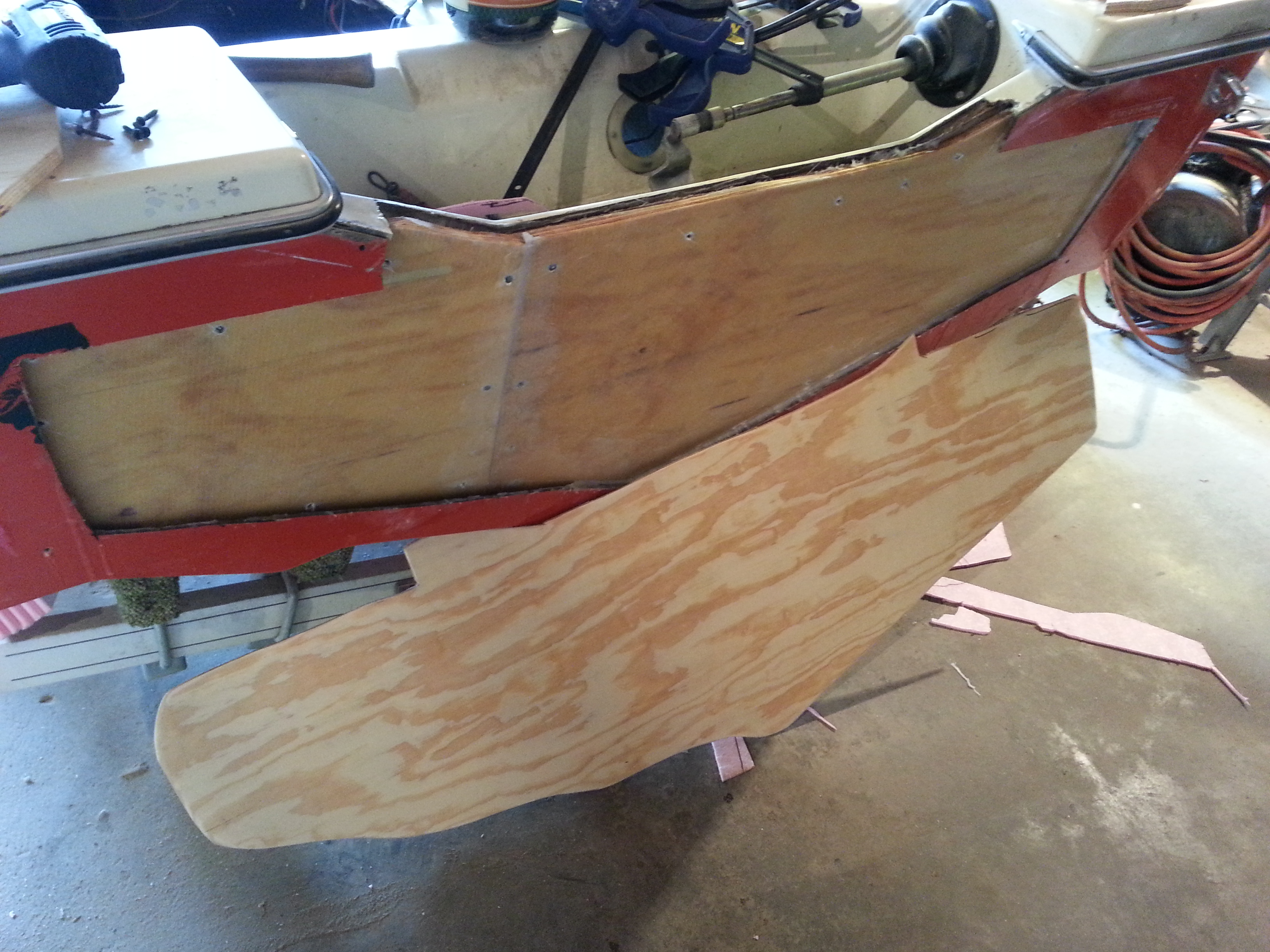
The final single piece covered the last seam and filled the space before the final skin was replaced into the indentation. Above you can see the second layer along with the final layer on the floor before installation. 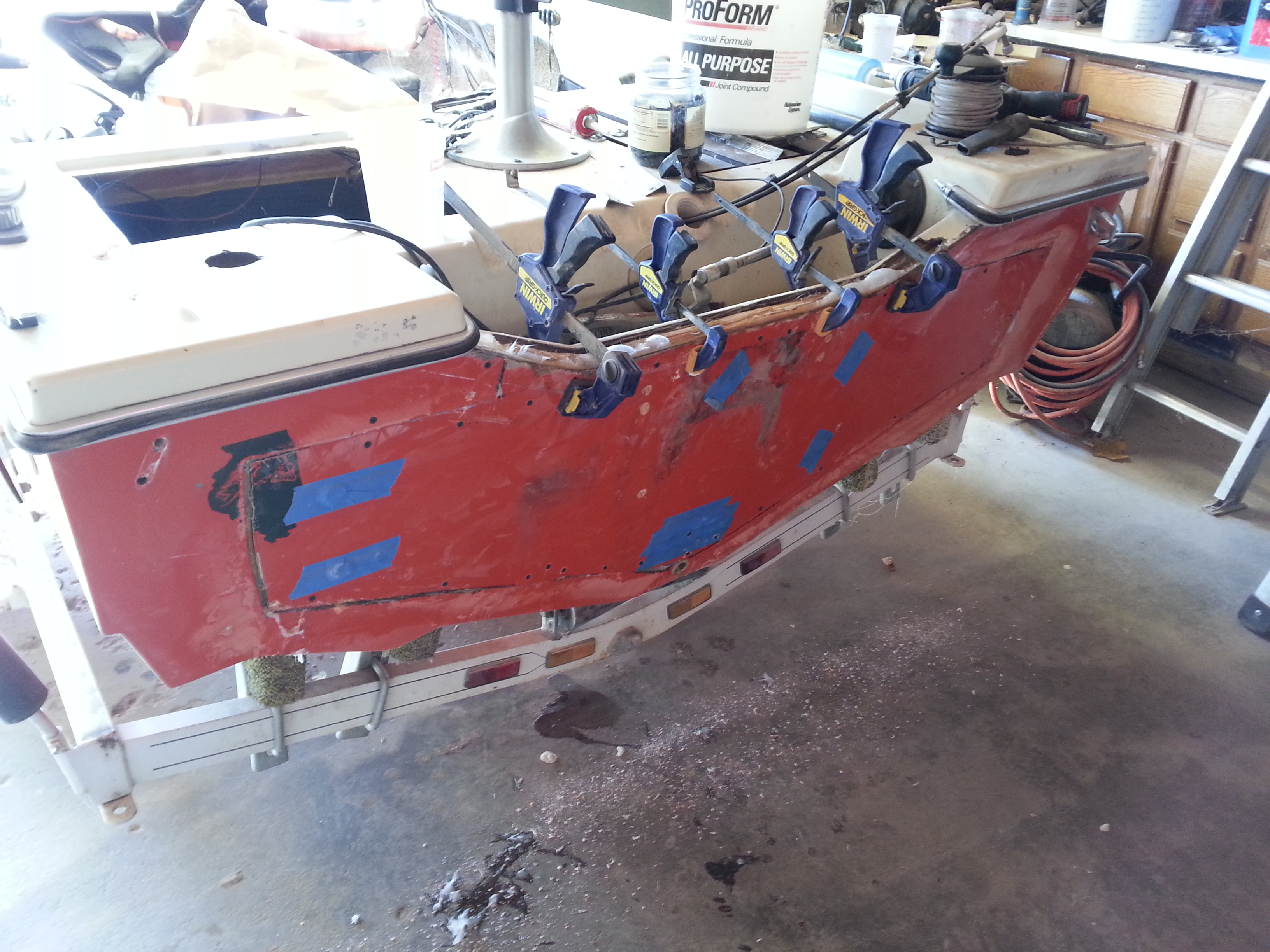
The original fiberglass layer was then reapplied. At this point, the boat was water safe. The top cap was replaced and filler was added as needed. Keep in mind that at no time was any filler like “Bondo” used all fillers were made form the two-part epoxy with a filler. I still need to add another couple coats of epoxy on the back to level it out and then put on a finish coat. Drain holes need to be re-drilled for the bilge and the well in front of the motor. 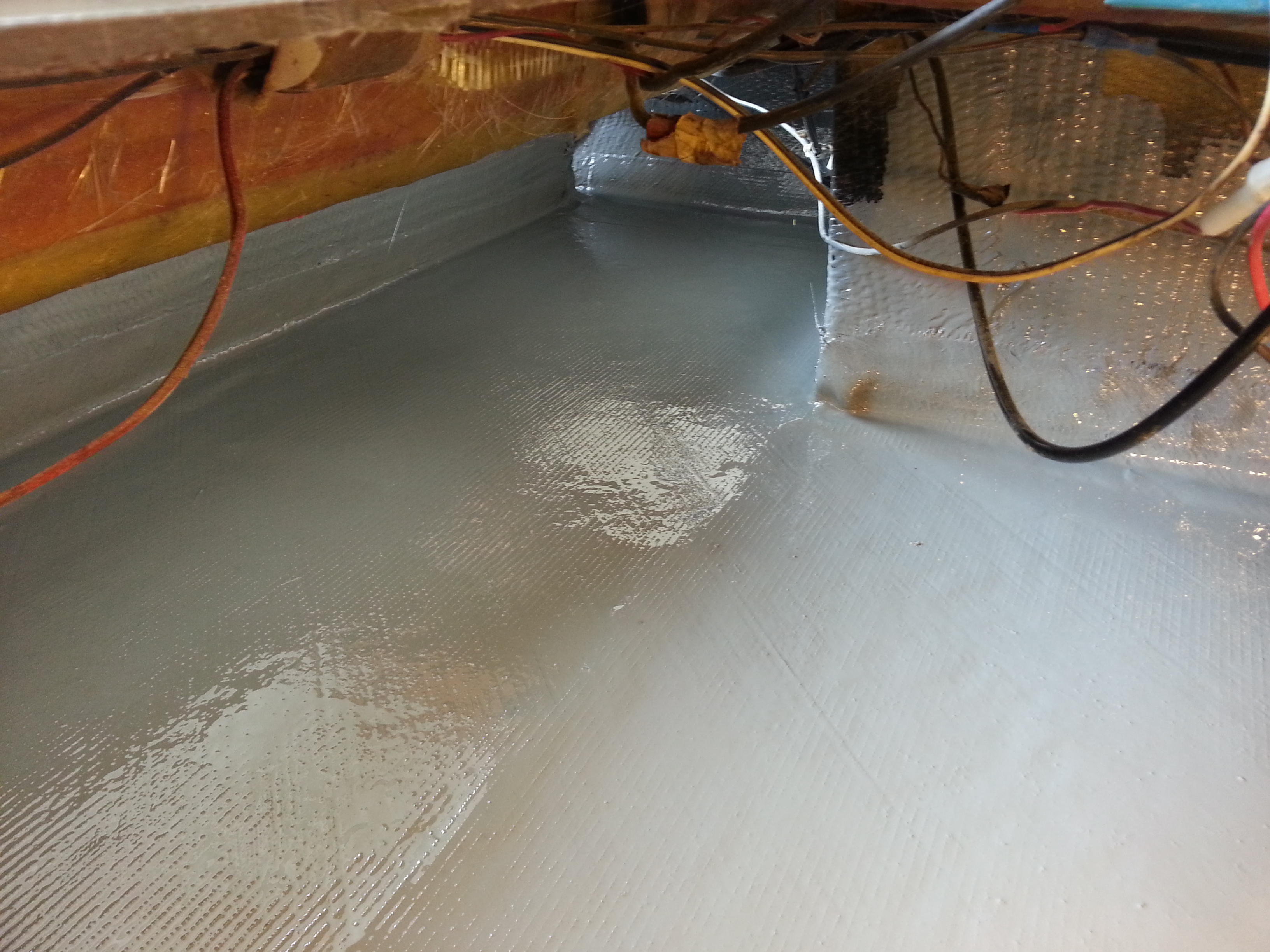
The inside of the rear section was painted with a special marine paint to protect the new fiberglass and give a more finished look. 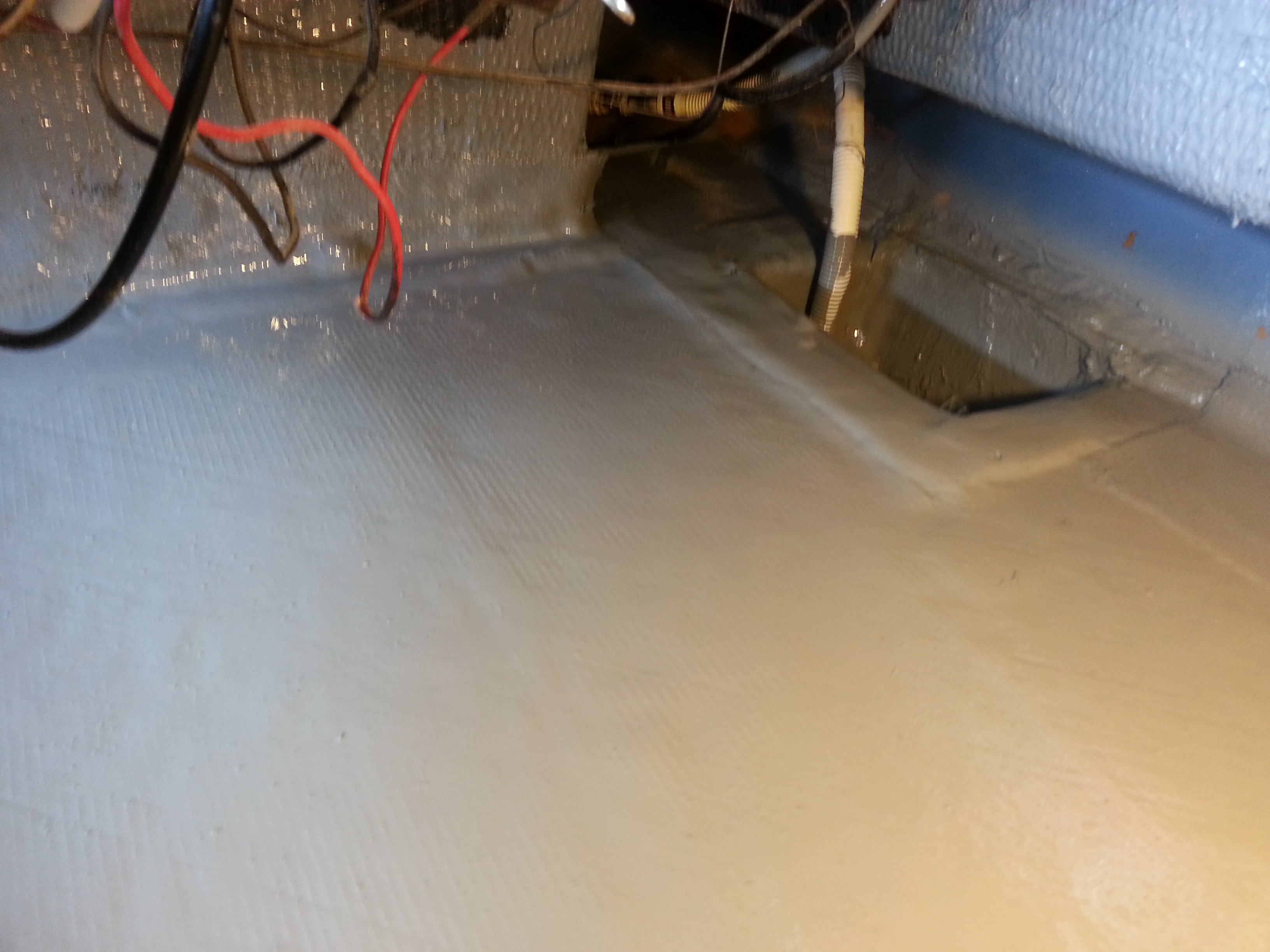
In the spring, I will finish the back end and mount the motor and connect everything back up. After a spring tune up on the motor, I will be ready for the water. For now, she sits out under a cover because i had to give her garage space back to Pat.
